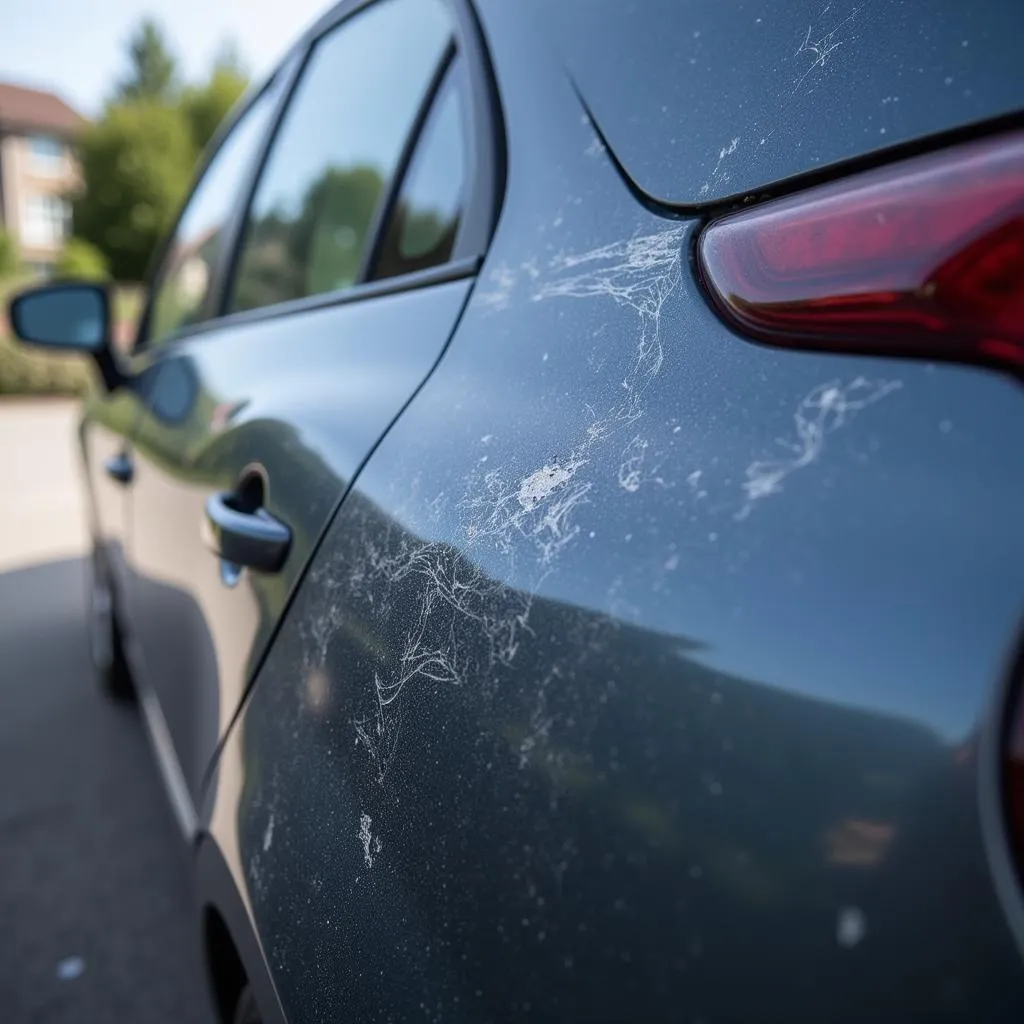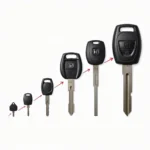Key scratches on your car can be an eyesore, instantly marring the sleek exterior you work hard to maintain. Whether it’s a case of accidental “keying” or a deliberate act of vandalism, finding a solution to restore your car’s finish is likely at the top of your mind. This comprehensive guide delves into the world of car scratch repair, offering practical solutions and expert advice to help you tackle those unsightly key marks.
Assessing the Damage: Is it a Scratch or Something More?
Before diving into repair methods, it’s crucial to assess the severity of the key scratch. Key scratches fall into three main categories:
- Clear Coat Scratches: These are the most superficial, affecting only the clear coat layer that protects your car’s paint.
- Paint Scratches: These go deeper, cutting through the clear coat and into the colored paint layer. You’ll see a distinct color difference in the scratch.
- Deep Scratches: These penetrate through the paint and primer, reaching the bare metal underneath. Deep scratches require more involved repairs to prevent rust.
DIY Repair Options for Minor Key Scratches
For minor clear coat scratches, you can often achieve satisfactory results with DIY methods:
- Scratch Remover Products: Numerous scratch remover products are available on the market, ranging from rubbing compounds to scratch removal pens. These products work by gently abrading the scratch and surrounding area to create a smooth, even finish.
- DIY Home Remedies: While not always as effective, some household items like toothpaste (non-gel, whitening varieties) or baking soda paste can help minimize the appearance of fine scratches. Apply gently with a microfiber cloth and buff in a circular motion.
Seeking Professional Help: When to Call in the Experts
For deeper scratches that have penetrated the paint layer or reached the metal, it’s best to consult a professional auto body shop. Professional repair methods for key scratches may include:
- Touch-Up Paint: Your car’s manufacturer likely offers touch-up paint kits specifically formulated to match your car’s color code. A professional can apply this paint meticulously to fill the scratch and blend it seamlessly.
- Wet Sanding and Buffing: For deeper scratches, professionals often use a combination of wet sanding and buffing. This process involves carefully sanding down the scratch and surrounding area to create a level surface before polishing it to restore the original shine.
- Partial or Full Repaint: In cases of extensive key damage or if the scratch has caused significant rusting, a partial or full repaint of the affected panel might be necessary.
Preventing Future Key Scratches: Proactive Measures
Preventing key scratches is always preferable to dealing with the aftermath. Here are some steps to safeguard your car’s paint:
- Park Strategically: Choose parking spots away from high-traffic areas, shopping cart corrals, and potential hazards.
- Car Covers: Consider using a car cover, especially if you park outdoors for extended periods or in areas prone to vandalism.
- Car Wax and Sealants: Regularly waxing and applying paint sealants create a protective barrier that can minimize the impact of minor scratches.
- Dash Cams: Investing in a dash cam can provide evidence in case of vandalism and may deter potential offenders.
Conclusion: Maintaining Your Car’s Pristine Appearance
Key scratches, while frustrating, are a common car ownership woe. By understanding the severity of the scratch and the available repair options, you can take the right steps to restore your car’s appearance. Whether opting for DIY solutions or seeking professional expertise, addressing key scratches promptly helps maintain your car’s value and your peace of mind. Remember, prevention is always key, and implementing proactive measures can significantly reduce the risk of future damage.



